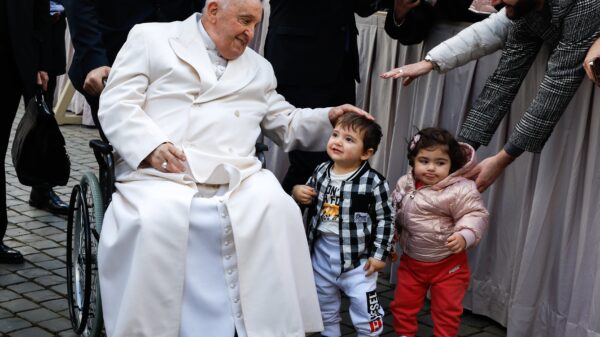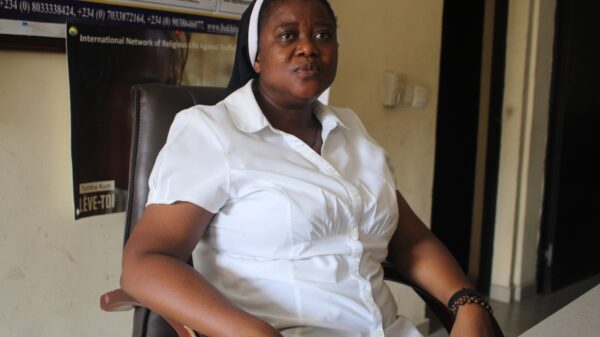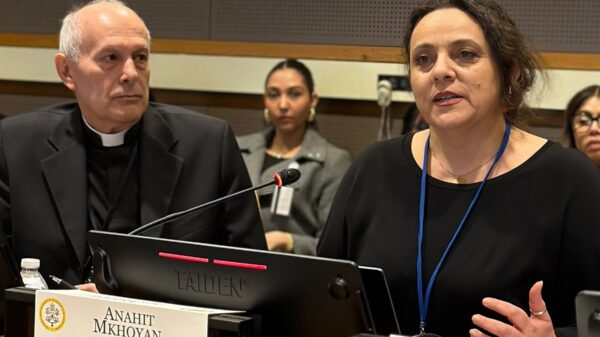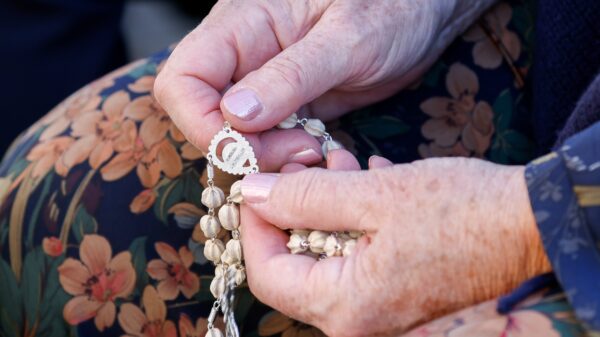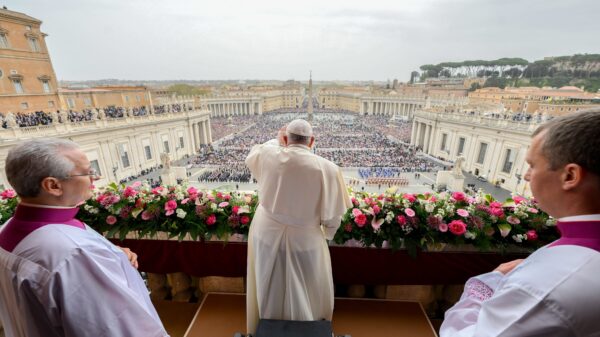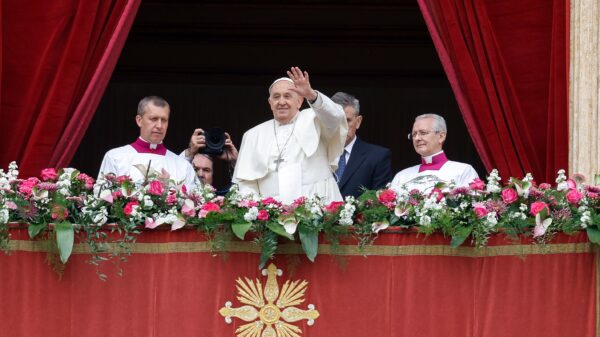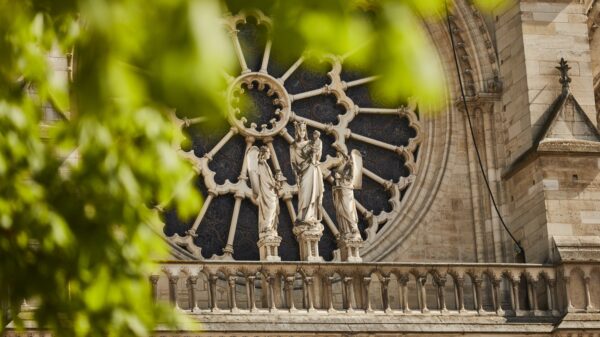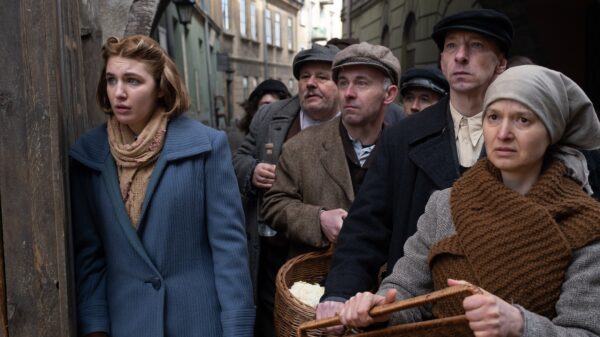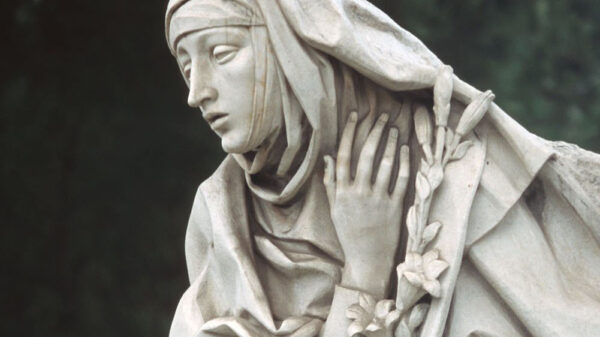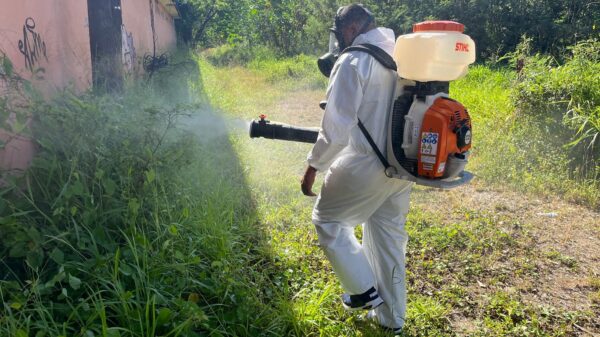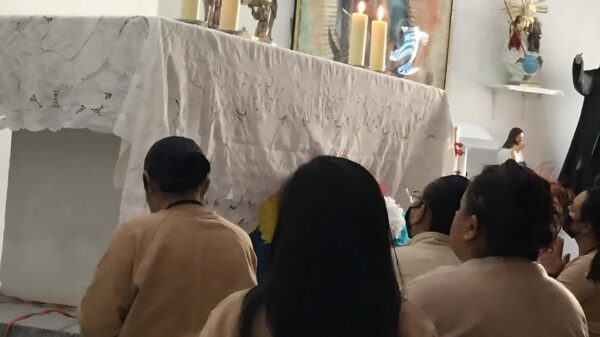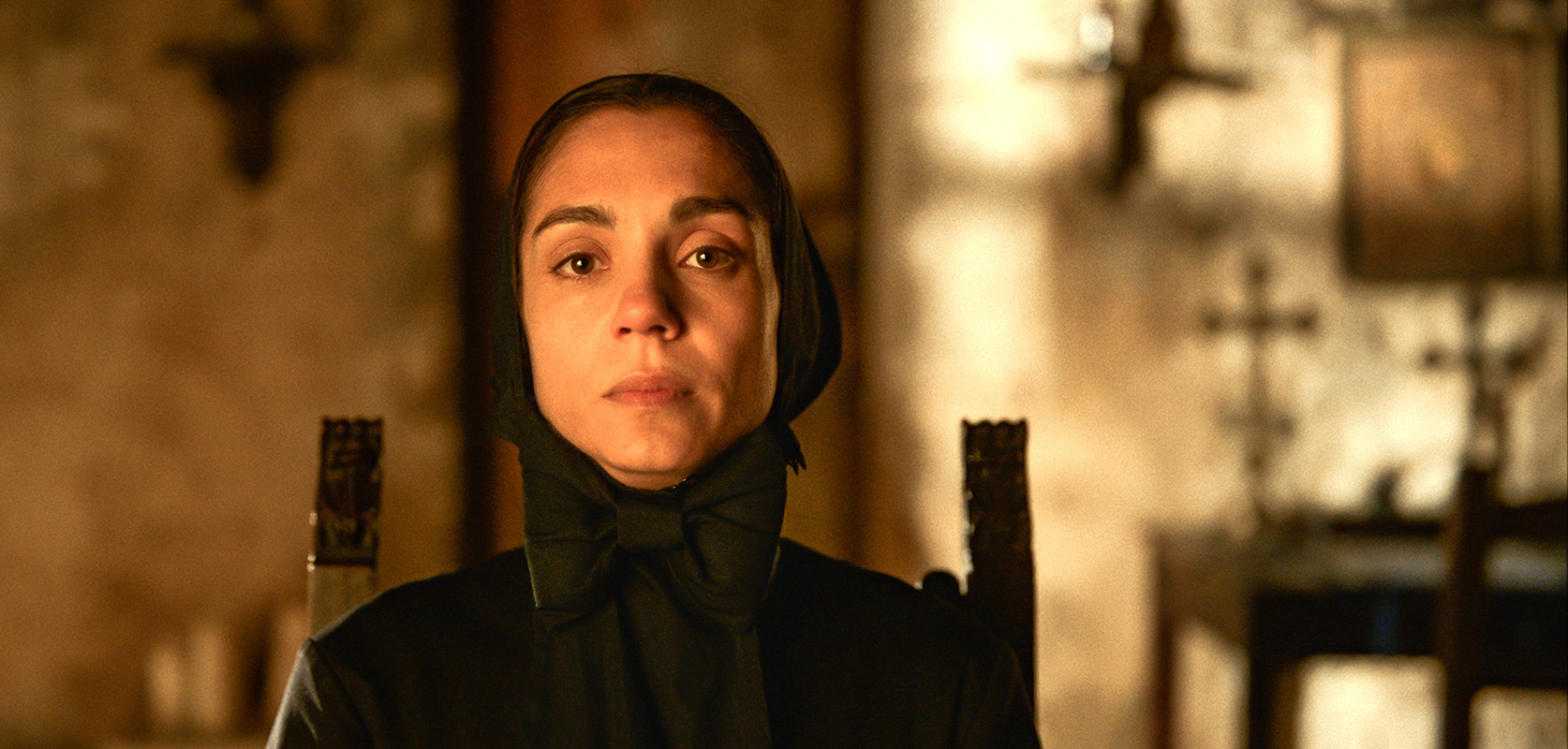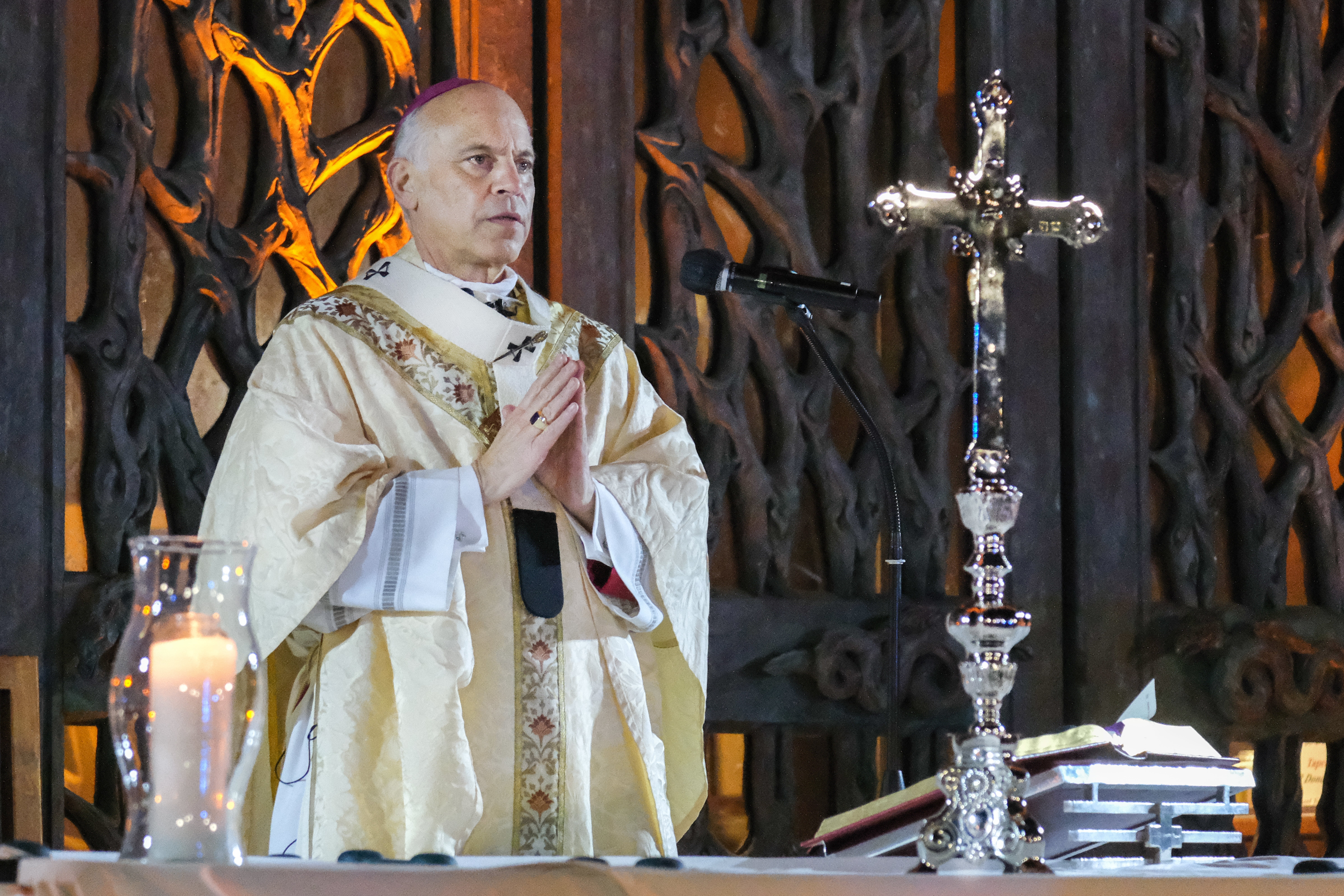(OSV News) — St. Frances Xavier Cabrini faced life-threatening health struggles and a crippling fear of water due to a near-drowning experience. And yet, she founded an order of missionary sisters tending to the poor and orphaned in dangerous parts of New York City and around the world, crossing the Atlantic Ocean 24 times in the process. She founded 67 hospitals, orphanages, schools and other charitable institutions up until the time of her passing in 1917.
“Cabrini” director Alejandro Monteverde was drawn in by the story of this saint, described by a speaker at the opening of one of her hospitals as “a little woman,” who stood barely 5 feet tall, but held her own in eloquence and grit.
“There was so much against her and to see what she was able to build and to build for others,” he told OSV News, “that in itself, caught my attention.”
Monteverde was “shocked” as a Catholic that he didn’t know her story prior to being approached about the film, especially given the fact that she was the first American saint.
The film shows Mother Cabrini’s efforts to go to China, which are met with Pope Leo XIII (Giancarlo Giannini) telling her instead to go “not to the East, but to the West” to New York City to minister to Italian immigrants and orphans who faced extreme poverty and discrimination.
Italian actress Cristiana Dell’Anna convincingly portrays Mother Cabrini’s determination as she fights to build an orphanage and hospital despite discrimination, opposition from church hierarchy and politicians, as well as her own health struggles.
Dell’Anna told OSV News that the role became personal for her and she could relate to Mother Cabrini’s perseverance amid obstacles. “We all have fears of some sort,” she said. “That could connect me to her and the difficulties that she had to overcome.”
In preparing for the role, Dell’Anna read a collection of Mother Cabrini’s letters, which showed her how “poetic” she was. “She came across as a very sensitive and sensible person,” who was also surprisingly “outspoken,” Dell’Anna said.
Bronwen McShea, a historian and author who also teaches for the Augustine Institute, spoke with OSV News about the film’s historical accuracy. McShea, who has a doctorate in early modern European history from Yale, has a section on Mother Cabrini in her forthcoming book “Women of the Church: What Every Catholic Should Know” with Ignatius Press.
She said that the depiction of the difficulties Mother Cabrini faced in New York City and the “overall arc” of the film is “mostly accurate.” She found the movie to be visually stunning and well-acted. As a New Yorker herself, she said the film “recreated life in Five Points and other neighborhoods in New York rather well.”
One of the first obstacles Mother Cabrini faced in New York was a chilly welcome from the local church authorities. Archbishop Michael Corrigan of New York, who was archbishop from 1885 to 1902, initially asked Mother Cabrini to return to Italy, and she reminded him that she was there at Pope Leo XIII’s behest.
A real letter from Archbishop Corrigan to Pope Leo XIII in 1886, a few years prior to Mother Cabrini’s arrival, shows the prejudices and the tense politics of the time.
“For four years now, they have had free use of the basement of Fr. Lynch’s church,” he wrote of the Italian immigrants. “Why only the basement? Forgive me, Excellency, if I tell you frankly that these poor devils are not very clean, so that the others do not want to have them in the upstairs church. Otherwise the others move out, and then good-bye the income. In time we hope to remedy these things. But it is necessary to move slowly.”
The film shows a physically weak Mother Cabrini fearlessly cutting through such prejudice and politics and finding creative means of helping the many Italian orphans, as well as getting funding for a hospital that would treat Italians.
Mother Cabrini used the media to spread the message of her mission. “She was using a lot of the newspaper outlets to communicate,” Monteverde said, adding that the character of the reporter Theodore Calloway, played by Jeremy Bobb, “was a combination of all the media outlets that she used, all the journalists that she approached.”
A glimpse of a real article from 1889 in the New York Sun shows both the sisters’ bravery amid the dangers of the city and how Mother Cabrini spread her message through the media.
“During the past few weeks,” the Sun reported, “dark-featured women, in the garb of Sisters of Charity, have been going through the Italian quarters in the Bend and in Little Italy, climbing up dark, steep, and narrow stairways, diving down into foul basements, and into dens which even a New York policeman does not care to enter without assistance.”
“Our object,” Mother Cabrini told the paper, “is to rescue the Italian orphans of the city from the misery and dangers that threaten them and to make good men and women of them.” The interview revealed her special care for Italian girls, who, she said, the sisters were “especially anxious” about due to the “terrible” temptations that the city offered them. This is shown in the film through her friendship with Vittoria (Romana Maggiora Vergano), a girl who leaves a life of prostitution to stay with the sisters.
As the film depicts Mother Cabrini overcoming obstacles, a battle-of-the-sexes narrative can feel over-emphasized at times. In one scene with Pope Leo XIII, she asks if he is rejecting her proposal of being a missionary to China because she’s a woman.
Monteverde said the portrayal of Mother Cabrini’s struggles with men in power was “very true to the times,” adding that “it’s not like men were these bad guys,” but at the time, “women had no voice and they did not have a very strong voice also within the church.”
However, he pointed out that the film shows how Mother Cabrini received assistance from Pope Leo XIII and how Archbishop Corrigan reversed his initial opposition to the sisters and became her ally. “They built a beautiful friendship after he started supporting her,” he said of the archbishop.
He also noted that a scene in which the fictional character of New York City Mayor Gould (John Lithgow) tells Mother Cabrini she would have made “an excellent man” was inspired by real comments made about her, including by Mayor des Planches, Italian ambassador to the United States at the time, who called Mother Cabrini a “great man” and Italian Minister Francesco Saverio Nitti who referred to her as a “statesman.”
In one scene, Pope Leo XIII tells Mother Cabrini that he would be making her “the first woman to lead an overseas mission” and because of this, the church would look at her “as proof of what women can or cannot accomplish.”
McShea provided some additional context for this claim, saying that Mother Cabrini only founded “one of the first missionary orders for women authorized by the pope after Vatican I.” There were, in fact, a number of women-led missionary groups prior to Vatican I as it was “easier to start congregations without Roman authorization first” and women’s missionary groups before Mother Cabrini’s time operated in this way.
One such missionary was St. Émilie de Vialar, a French woman who lived from 1797 to 1856 and founded the Sisters of Saint Joseph of the Apparition as a missionary congregation. The group went to Algeria in the early 19th century with the support of a bishop in France. By the time of her death, Vialar had founded 42 houses from North Africa to Burma. She was canonized in 1951.
Another woman who did missionary work for the church prior to Mother Cabrini’s time was Blessed Anne Marie Javouhey, who lived from 1779 to 1851. In 1807, she founded the Sisters of Saint Joseph of Cluny, who did mission work in Madagascar and West Africa.
“Mother Cabrini was just one of many remarkable women like this,” McShea said, calling them “the unsung heroes of the 19th century — and of earlier times. Women were serving as missionaries in the 17th and 18th centuries, too.”
And many churchmen proactively favored their work, seeing them as necessary partners in mission settings, she added. “This was also true in Cabrini’s case, as the film might have illustrated a bit more.”
At the same time, McShea noted that one of Mother Cabrini’s lines in the film is something she really did say to a skeptical churchman who said missionaries were typically men. Mother Cabrini told him that “if the mission of announcing the Lord’s Resurrection to His Apostles had been entrusted to Mary Magdalene, it would seem a very good thing to confide to other women an evangelizing mission.”
Mother Cabrini’s letters illustrate that prayer was at the heart of her mission. She once wrote to her sisters, “We must pray without tiring, for the salvation of mankind does not depend on material success; nor on sciences that cloud the intellect. Neither does it depend on arms and human industries, but on Jesus alone.”
While the film mostly focuses on Mother Cabrini’s work, a few scenes show her in prayer at pivotal moments. Monteverde said that’s because “her life is the ultimate prayer,” and there is power in seeing someone pray through their actions.
The movie also features Mother Cabrini’s motto from Scripture, “I can do all things through Him who strengthens me” (Phil. 4:13).
Lauretta Brown is culture editor for OSV News. Follow her on X @LaurettaBrown6.
The theatrical release of “Cabrini” (Angel Studios) is March 8, 2024.






